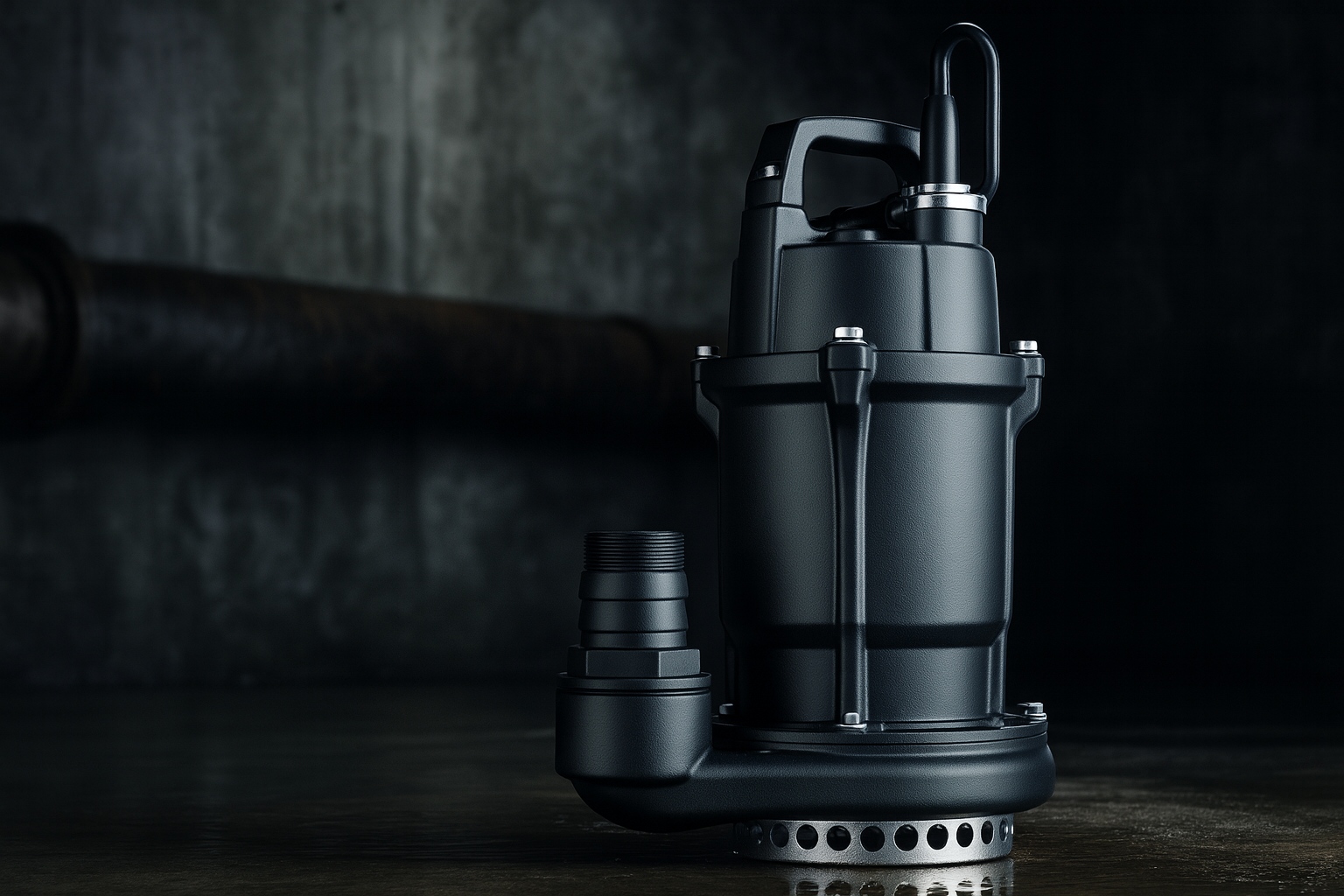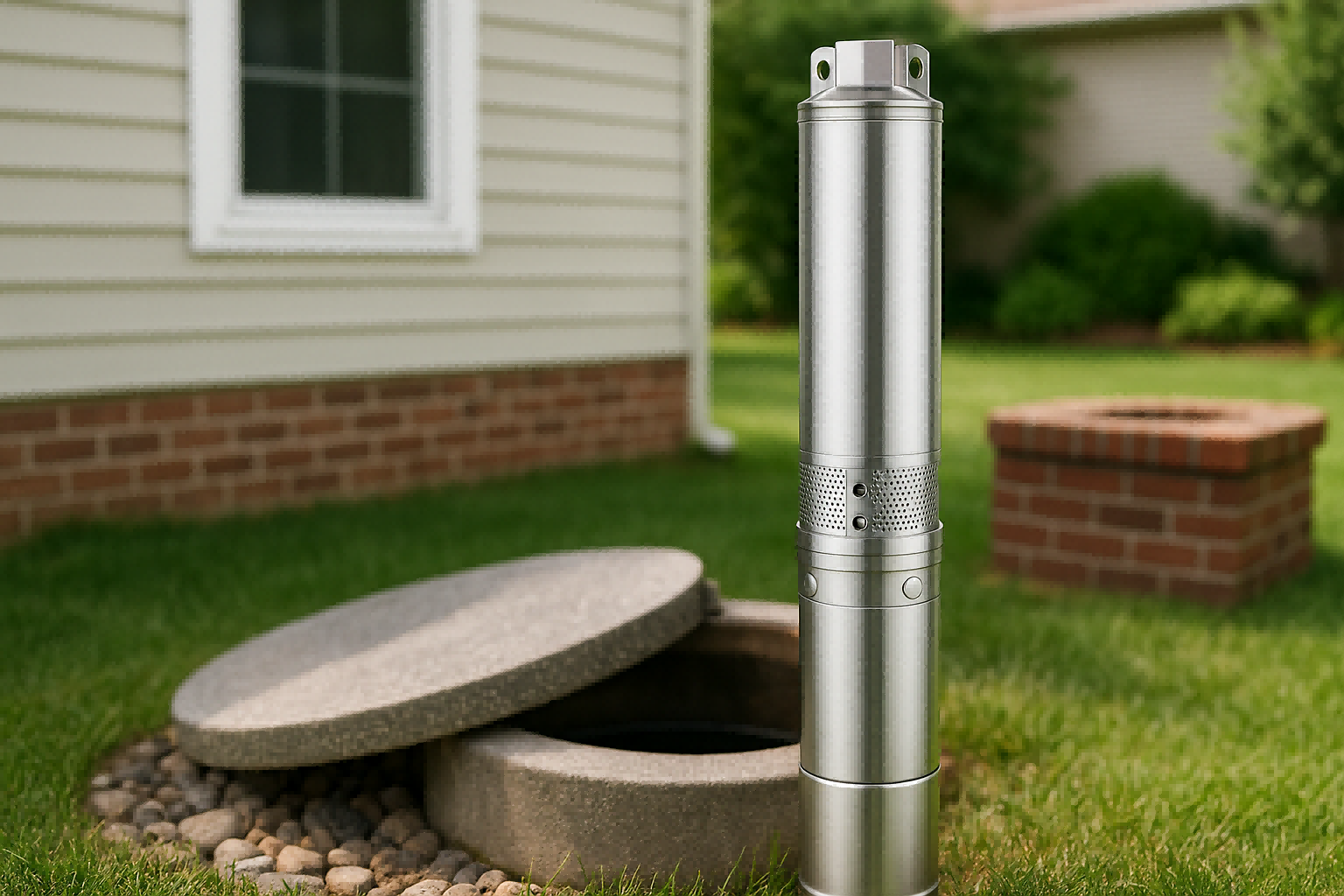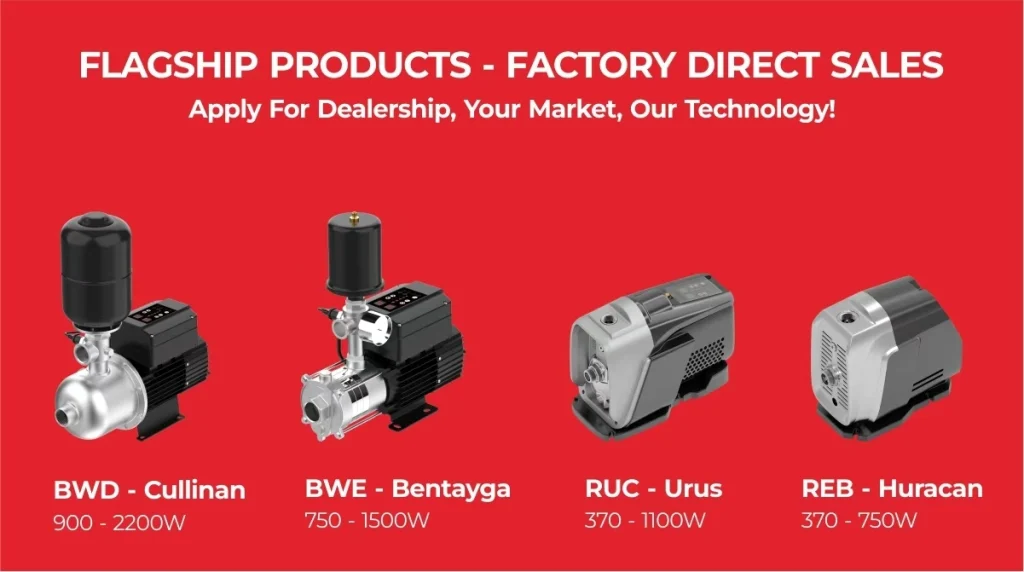Struggling with unwanted water or needing a reliable water source?
Choosing the wrong pump leads to inefficiency, potential damage, and wasted resources.
A submersible pump is a device designed to work while fully immersed in the liquid it moves.
Its primary uses include draining flooded areas, extracting water from wells, managing sewage, and agricultural irrigation, pushing water to the surface with high efficiency.

This powerful tool is a cornerstone of modern water management, but selecting the right one requires a clear understanding of its functions and features.
This guide will walk you through everything you need to know about submersible pumps.
We will cover how they work, the different types available, and how to choose the perfect model for your specific requirements.
Let's dive in to ensure you make a smart, effective choice.
The submersible pump: a brief introduction
Dealing with a flooded basement or a waterlogged site?
Manual bailing is slow, and surface pumps can struggle with suction, leaving you with standing water and potential damage.
Sometimes called a bell pump, a submersible pump works by being placed directly into the water.
It's the ideal solution for draining flooded areas because it pushes water out instead of pulling it, making it highly efficient for emergency water removal.
A submersible pump is an integrated unit, combining a pump body and a hermetically sealed motor in a single, waterproof casing.
This design is fundamental to its operation, as the surrounding liquid helps to cool the motor during use.
This prevents the motor from overheating, which is a common issue with pumps that run dry.
The entire assembly is lowered into the fluid, where it can begin its work immediately.
Differentiating by Water Type
The primary distinction between submersible pump models lies in the type of water they are engineered to handle.
This is a critical factor in ensuring the pump's longevity and performance.
-
Clean-Water Pumps: These are designed for pumping water with minimal solid particles, such as rainwater from collection tanks, pool water, or water from clean wells. Their internal components and intake are not built to handle debris.
-
Dirty-Water Pumps: These models are more robust. They are built to process water containing suspended solids like sand, mud, leaves, and other small debris. A key feature is a wider intake and a specially designed impeller that can pass these solids without clogging.
-
Heavy-Duty/Slurry Pumps: For the most challenging applications, such as construction site dewatering, mining, or sewage with fibrous material, heavy-duty pumps are required. They often feature a grinder or macerator impeller. This component actively shreds and breaks down large solids and tough materials before they pass through the pump, preventing blockages and ensuring smooth drainage.
The Role of the Float Switch
Many submersible pumps come equipped with a float switch, which provides crucial automation.
This simple mechanical device rises and falls with the water level.
When the water level rises to a preset point, the float activates the pump.
When the level drops sufficiently, the float deactivates it.
This feature is essential for unattended operation, such as in a sump pit, where the pump needs to manage groundwater automatically.
However, in automatic mode, a float switch will always leave a small amount of water to ensure the pump does not run dry.
Some advanced models offer both manual and automatic modes.
Manual mode allows the pump to run continuously, enabling it to drain a surface almost completely dry, leaving only a small amount to be wiped up.
This requires careful supervision to prevent dry running.
How does a submersible pump work?
You need to move water, but how does the pump actually get it from point A to point B?
Understanding the inner workings seems complicated, involving pressures and mechanics that are hard to grasp.
A submersible pump uses a sealed motor to power an impeller.
As the impeller spins, it creates a pressure differential that draws water in through a suction grid at the bottom and forcefully pushes it up and out through a discharge pipe.
The operational principle of a submersible pump is based on centrifugal force and is elegantly simple in its design.
Let's break down the process and the key components that make it happen.
The Pumping Process Step-by-Step
-
Submersion: The pump is fully submerged in the liquid. The waterproof housing protects the electric motor from any contact with the fluid. The fluid itself serves as a natural coolant for the motor.
-
Water Intake: At the base of the pump is a suction grid or screen. This screen serves as the first line of defense, preventing large debris that could damage the pump from entering. Water is drawn directly through this grid into the pump’s body.
-
Impeller Action: Inside the pump, an electric motor spins an impeller at high speed. The impeller is a rotor with a series of angled vanes. As it spins, it imparts kinetic energy to the water and flings it outward toward the pump casing due to centrifugal force.
-
Pressure Conversion: As the fast-moving water hits the pump casing (known as the volute), its velocity is converted into high pressure.
-
Discharge: This high-pressure water is then forced up through the pump body and out of the discharge outlet, which is connected to a hose or pipe. This allows the water to be transported away from the source to the desired location.
Core Component Breakdown
The reliability and efficiency of a submersible pump depend on the quality and design of its core components.
| Component | Function | Key Characteristics |
|---|---|---|
| Sealed Motor | Provides the power to spin the impeller. | Hermetically sealed in an oil-filled or air-filled compartment. The surrounding water provides essential cooling. |
| Impeller | The rotating part that moves the water. | Design varies based on pump type (e.g., open for dirty water, vortex for solids, closed for clean water). Material choice (e.g., stainless steel, cast iron) affects durability. |
| Volute Casing | The pump body that contains the impeller. | Its snail-like shape is designed to efficiently convert the water's velocity into pressure. |
| Suction Grid | The intake port at the bottom of the pump. | Filters out large debris to protect the impeller and internal components from damage and clogging. |
| Mechanical Seals | Prevent water from entering the motor housing. | A critical component for longevity. High-quality seals (e.g., silicon carbide) resist wear and harsh chemicals. |
The Critical Issue of Running Dry
A submersible pump must remain submerged to operate safely.
The water it pumps is not only its task but also its lifeline for cooling.
If the water level drops below the intake and the pump continues to run, it is "running dry."
Without water flowing through it, the motor temperature will rise rapidly.
This can lead to overheating, which can damage the motor windings, melt plastic components, and destroy the mechanical seals, causing catastrophic failure.
This is precisely why float switches are designed to shut the pump off before the water level gets too low, preserving the pump's operational integrity.
What type of submersible pump should I buy?
Choosing a pump seems simple, but the wrong choice can lead to clogs, burnout, or failure.
Specialized situations like narrow pits or corrosive liquids create even bigger challenges for standard pumps.
The right submersible pump is tailored to the specific liquid and space.
For draining surfaces completely dry, use a puddle pump.
For tight spaces, choose a model with an internal float.
For corrosive fluids like farm waste, a specialized FEKA pump is necessary.
Selecting the ideal submersible pump requires matching its design and material specifications to the demands of the job.
General-purpose pumps are versatile, but specialized situations call for purpose-built solutions to ensure efficiency, reliability, and safety.
Understanding these specific models is key to solving complex water-draining challenges.
The Puddle Pump: For Near-Complete Drainage
Standard submersible pumps with external floats typically shut off leaving an inch or more of water.
This is often unacceptable in situations like clearing a basement floor after a leak.
- Function: A puddle pump, also known as a puddle sucker, is designed to drain water down to a very low level, often just a few millimeters.
- Design: They feature a bottom plate intake that sits almost flat on the surface. They do not rely on traditional float switches for low-level operation and must be monitored in manual mode to prevent running dry.
- Application: Ideal for flood cleanup on flat surfaces, draining hot tub shells, or emptying shallow pools where near-complete water removal is the goal.
The Compact Pump: For Confined Spaces
Many drainage applications involve small, tight areas where a standard pump with an external float switch won't fit or operate correctly.
- Function: These pumps are designed to operate in narrow sump pits, utility vaults, or other confined spaces.
- Design: Their key feature is an internal or integrated float switch. This can be a magnetic switch or a vertical float that moves up and down on a rod within the pump's footprint. This design allows for automatic operation without the float getting snagged on the pit walls. They are also built with a small diameter to fit into pits as narrow as 20x20 cm.
- Application: Perfect for under-sink sump pits, elevator shafts, and any pre-fabricated drainage basin with limited space.
The FEKA Pump: For Corrosive and Faecal Matter
Pumping sewage, farm slurry, or industrial wastewater presents a unique challenge beyond just solid particles.
These liquids often contain caustic and corrosive substances that can rapidly degrade standard pump materials.
- Function: A FEKA pump is specifically engineered to handle faecal matter and other chemically aggressive fluids.
- Design: These pumps are constructed from highly resistant materials. Key components like the pump body, impeller, and seals are made from materials like stainless steel (AISI 316) or specialized polymers that can withstand corrosive substances. The rubber seals and gaskets are also made from heavy-duty, chemically resistant materials (e.g., Viton) that won't degrade when exposed to waste.
- Application: Essential for septic tank effluent, agricultural manure pits, livestock farms, and industrial applications involving wastewater with chemical content.
Buying a submersible pump: four tips
Investing in a water pump can be a significant decision.
Without a clear checklist, you might end up with a pump that's too weak, too strong, or lacks the features you actually need.
Focus on four key areas before buying.
Check the required capacity and delivery head to match your job.
Decide if you need automatic operation with a float switch.
Finally, review the included accessories for user-friendliness and value.
Making the right choice when purchasing a submersible pump ensures your investment is effective and long-lasting.
By systematically evaluating your needs against the pump's specifications, you can confidently select the best model.
Here are four essential tips to guide your decision-making process.
Tip 1: Check Pump Capacity (Flow Rate)
The pump's capacity, measured in liters or gallons per hour (L/h or GPH), determines how quickly it can move water.
This is arguably the most important specification to match to your task.
- Assess Your Needs: Are you draining a small puddle or a large, flooded basement? A pump with a capacity of 7,500 L/h might be perfect for a small pool, but completely inadequate for an emergency flood situation where a model with 18,000 L/h or more would be necessary.
- Think About Time: Calculate the volume of water you need to move and decide on a reasonable timeframe. For example, to drain a 10,000-liter pool, a 5,000 L/h pump would take 2 hours, while a 10,000 L/h pump would take 1 hour. Faster is not always better if it over-stresses your drainage system.
- Action: Define your required flow rate first, then look for pumps that meet or slightly exceed this capacity.
Tip 2: Check the Delivery Head (Lift)
The delivery head is the maximum vertical height the pump can push water from the water source to the discharge point.
This is a critical factor that is often overlooked.
- Measure the Height: Measure the vertical distance from where the pump will sit to the highest point the discharge hose will reach. For example, if a pump is in a 3-meter-deep basement and the hose goes up and out a window 1 meter above ground, your required head is at least 4 meters.
- Factor in Friction Loss: Pumping water horizontally also creates resistance, which reduces the effective head. As a rule of thumb, every 10 meters of horizontal distance can be equivalent to about 1 meter of vertical lift. Always choose a pump with a maximum delivery head that is comfortably above your calculated requirement. A pump operating at its maximum head will have a flow rate close to zero.
- Action: Calculate your total required head (vertical lift + friction loss) and select a pump whose specifications show it can perform efficiently at that height.
Tip 3: Consider Automatic vs. Manual Operation
How the pump turns on and off is a key feature related to convenience and pump safety.
- Automatic (Float Switch): If the pump will be left unattended to manage intermittent water levels, such as in a sump pit, a float switch is essential. It provides "set it and forget it" functionality and protects the pump from running dry.
- Manual: For tasks where you want to drain a surface as dry as possible, you will need to operate the pump in manual mode. This requires your full attention to switch the pump off as soon as it starts sucking air to prevent motor damage.
- Hybrid Models: Some pumps offer the best of both worlds with a switch that allows you to choose between automatic and manual modes, providing maximum flexibility.
- Action: Determine your primary use case. Choose automatic for unattended, recurring tasks and manual for supervised, complete drainage jobs.
Tip 4: Check Included Accessories
The accessories that come with a pump can significantly impact its ease of use and overall value.
- Hose Connectors: Does the pump come with a universal or multi-step adapter to fit various hose diameters? This can save you a trip to the hardware store.
- Hose Length & Type: While most pumps don't include a hose, some kits do. Ensure it's the right length and type (e.g., lay-flat discharge hose) for your needs.
- Power Cord Length: A longer power cord provides more flexibility in placing the pump without needing an extension cord (which can be a safety hazard in wet environments).
- Check Valve: Some pumps have a built-in check valve, which prevents water in the hose from flowing back into the pit when the pump shuts off. This prevents rapid on-off cycling.
- Action: Compare the accessory packages of different models. A slightly more expensive pump might be a better value if it includes essential accessories that you would otherwise have to buy separately.
Conclusion
A submersible pump is a versatile and powerful tool for managing water.
Understanding its types, functions, and key buying criteria allows you to choose the perfect model for any task.
FAQs
What is the main advantage of a submersible pump?
Its main advantage is efficiency.
By pushing water instead of pulling it, it avoids suction lift limitations and uses energy very effectively to move water over long distances.
Can you use a submersible pump for drinking water?
Yes, but only if it is a "well pump" specifically designed and certified for potable water.
These are made from materials that will not contaminate the water.
How deep can a submersible pump be placed?
This depends on the model.
Standard sump pumps are for shallow depths, while deep well submersible pumps can be placed hundreds of feet deep in a well casing.
What happens if a submersible pump runs dry?
Running dry causes the motor to overheat rapidly since it relies on the surrounding water for cooling.
This can permanently damage the motor and seals, leading to pump failure.
Can a submersible pump run continuously?
Yes, as long as it remains fully submerged.
Pumps are rated for continuous duty, meaning they are designed to run without stopping, provided they have adequate water flow for cooling.
What's the difference between a sump pump and a submersible pump?
A sump pump is a specific type of submersible pump.
It's designed for use in a sump pit to automatically remove groundwater from around a building's foundation.
How do I choose the right size submersible pump?
Consider two main factors: flow rate (how much water you need to move per hour) and delivery head (the vertical height you need to pump the water).
Do submersible pumps use a lot of electricity?
Their consumption varies by size.
However, they are generally efficient because they don't expend energy creating suction from a distance.
Modern models with efficient motors can be very economical.







